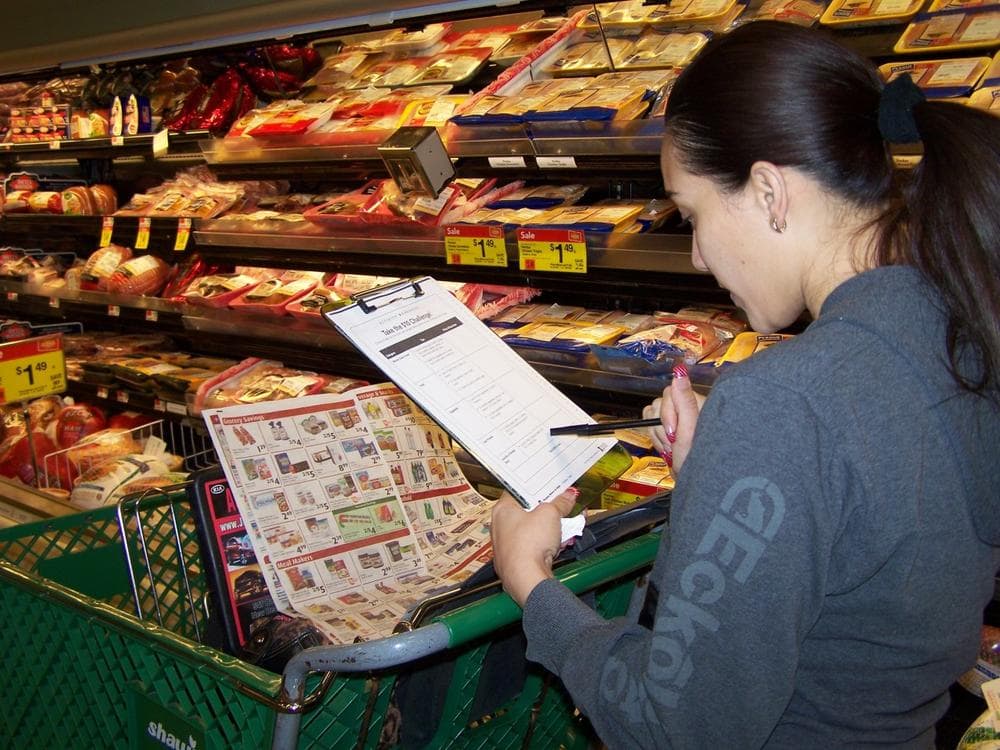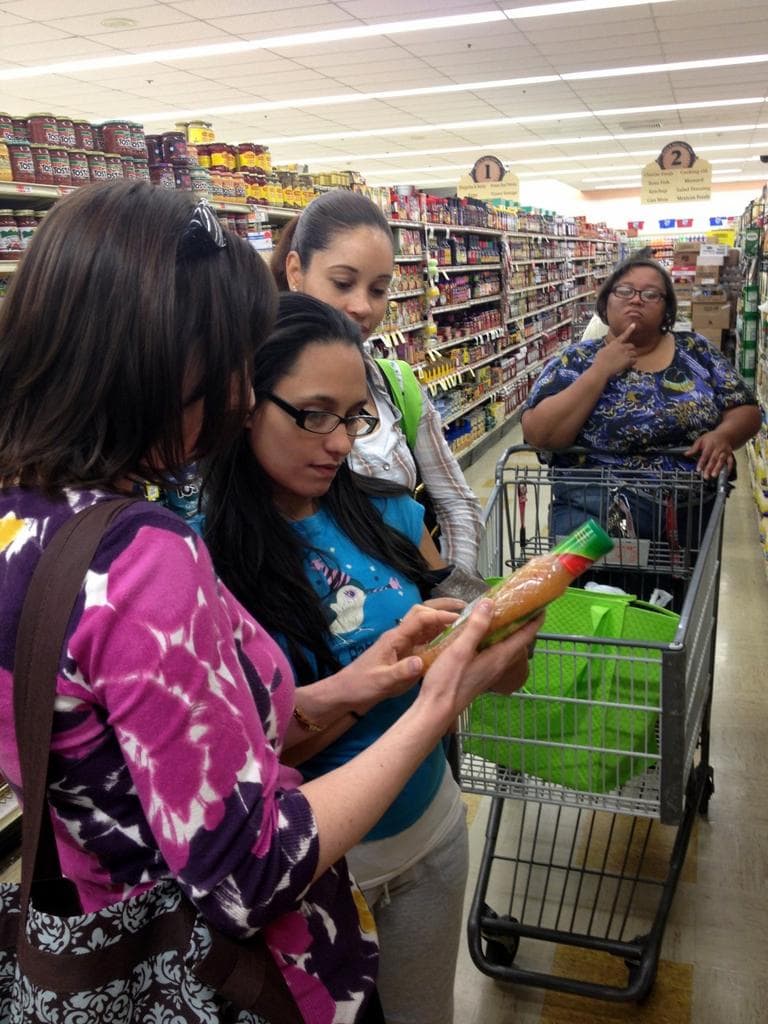Advertisement
Shopping Lessons: How I Could Have Eaten Better On $4.50 A Day

I've been feeling a little embarrassed about failing the week-long SNAP challenge, going over the total food budget of $31.50 with two days to go. What's more, I had a sneaking suspicion I wasn't eating as healthily as I'd like.
So I spoke with Alicia McCabe, Massachusetts director of Share Our Strength's Cooking Matters program, who assured me that yes, I was operating under common dietary and shopping misconceptions. My biggest lessons: Seasoning is key, fresh isn't always best, and there are many more barriers to healthy eating than cost alone.
Cooking Matters offers a range of cooking classes, from one to six sessions, and grocery store tours, all catered towards teaching low-income families how to make the most of their food budget. "People need to understand that it actually is possible to eat healthy while on a budget," McCabe told me. "There are always healthier choices that can be made, but people don't necessarily know how to determine what the healthier choice is."
We talked about my own SNAP challenge, and how, for many families, affording food is only part of problem.
On My SNAP challenge menu:
Alicia McCabe: When I think about healthy eating, for me it's not so much taking things out of my diet that aren't healthy, it's about adding things in that are healthy. So can I add more whole grains, can I add more fruits and vegetables? When I hear a menu of chicken and rice and veggies, the first thing that comes to mind is, was the rice white rice or brown rice?
It was the Uncle Ben's, the boxed stuff. And it was chicken flavored.
Something like getting rice that has that added chicken flavoring in it, we would have looked at the nutrition facts panel together and we probably would have seen that the sodium content was really high in something like that, and we would have talked about how you could have purchased brown rice or barley or whole grain pasta and seasoned it in a variety of ways so that you could have had a little bit more variety in your diet.
For the vegetables, you mentioned broccoli and asparagus. Were they fresh, frozen or canned?
They were straight from the produce section, they were fresh.
Oftentimes when people are thinking they need to eat healthy and they need to add produce to their diet they immediately go to the fresh produce section, which is great but it isn't the only one available.
Oftentimes the frozen vegetables are much more affordable than the fresh ones, and have the same high quality nutrition that you’re going to find in those fresh vegetables. With the canned vegetables or fruit, you have to be a little bit more discerning because canned foods can have a little extra sodium or can have extra sugar if it's the fruit, but just reading the labels and making some good choices you can save a tremendous amount of money and incorporate a lot of variety into your diet.
I think that's really interesting because that's kind of contrary to my thinking. My thinking was it has to be fresh if it's healthy.
You are absolutely not alone in that. In January of 2012 Share Our Strength put out a report called “It's Dinner Time,” and it looked at the food preparation and cooking habits of families across the country. What we found in that study was that, very similar to you, people had a very strong belief that fresh produce was best. When you ask them whether frozen was still healthy the number dropped to about 50 percent of the people think frozen produce was healthy, and when you asked them about canned, it dropped all the way down to about 12 percent. So right there I think there's this huge opportunity to educate people that you can get taste and you can get variety while still on a budget.
On other barriers to healthy eating:
I think time is a huge factor, especially for families. The majority of people receiving SNAP benefits are working families. And half of the people receiving snap benefits are kids. So you've got a whole group of people that are pressed for time and maybe don't have the culinary skills that they really need in order to pull together a really healthy, interesting meal that's quick and is affordable. Maybe they don't have a pot or pan that's the right size maybe their oven isn't working, maybe they don't even have an oven.

One of the key things for us is making sure that the information we’re talking about is relevant. So we're going to ask people, what are the barriers you're facing? If you’re a mom with two kids that are really picky and are kind of stressing you out because they change their mind each day about what they’ll eat and what they won't eat, you've got a very different set of concerns than somebody who's got two jobs and absolutely no time to do meal preparation or planning during the day.
For somebody else it might be a health concern. We've got a lot of folks that are struggling with things like diabetes or high blood pressure. Food allergies are a huge issue. There's plenty of people that go to the grocery store and they just grab the one or two things that they know they can eat or their family member can eat.
On the importance of nutrition education, the other half of SNAP:
It’s not even the other half of SNAP unfortunately. One of the reasons people are doing the SNAP challenge at this point in time is because the Farm Bill is on the table in Congress and in that Farm Bill, which is of course a very complex piece of legislation, but in that Farm Bill is the money that covers the SNAP program. Incorporated into the SNAP program is something that’s called SNAP Ed, so education that's available for people receiving SNAP benefits. It is less than one half of one percent of the total SNAP budget.
So there is a lot of challenge associated with the fact that we’re providing families with some limited SNAP resources and we are not providing adequate education to ensure that they are using those resources as efficiently and as wisely as possible.
People don't tend to be on SNAP their whole lives. They tend to be on snap for about 9 months. So there's an opportunity to get people through a tough time in their financial lives and also an opportunity to get them some skills so that they can stretch those dollars a little further.
Readers, your most common shopping mistakes? Any questions for Alicia McCabe?